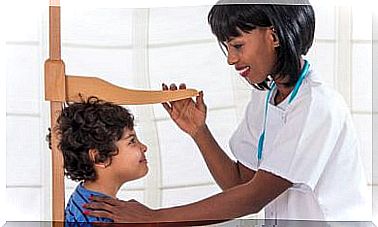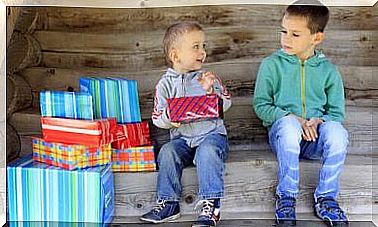Breathing Exercises For Children: Helpful Tips

In this article, we will look at some of the best breathing exercises for children. Teaching your children appropriate breathing techniques is a simple, yet effective, strategy for slowing down, both mentally and physically. It will help them to be aware of how they are feeling, how to relax, and how to control their emotions.
Conscious breathing enables children to control their emotions and improve their sense of mental and physical well-being. That way, it’s the same as any other healthy habit.
With that in mind, it is a good idea to help them take regular breaks to practice conscious breathing. Show them how these breathing exercises can affect the way they feel, think and behave.
The best breathing exercises for children
1. Breathing exercises for children with imaginary flowers
The first of these breathing exercises requires some imagination. To get started, your children need to sit on the floor with their legs crossed or on their heels. Next, they should close their eyes and direct their attention to the sound of their breathing. At this point, they need to imagine that they are holding a flower.
Next, they should take a deep breath, as if smelling the flower. Next, they need to exhale and imagine that they are bending the leaves. They should repeat the cycle of inhaling deeply and exhaling softly for a few minutes. This breathing technique is a simple way to make children more aware of this involuntary action.

2. Deep breathing with the abdomen
To practice this type of deep breathing, your child needs to choose a comfortable, upright position. The right hand should be placed on the abdomen and the left hand on the chest.
Breathe deeply four times, then exhale through your nose, with your mouth closed. This exercise will allow the baby to feel the abdomen expand and move inward.
Deep breathing with the abdomen should last a few minutes. It allows children to relax and think about different things during the process. It is likely, after a few sessions, that your child will feel comfortable even before you expect it.
3. Elephant breathing
It is one of the most entertaining breathing exercises for children. Furthermore, it is very easy to perform and it allows children to have fun while doing it. They should start in a standing position, with their feet apart.
Next, they must place their arms in front of them and place their palms on the floor, like an elephant. Next, they should inhale through the nose and lift their arms above their heads.
As they exhale through their mouths, they should lower their palms back to the floor. We recommend that they repeat this exercise three times.
4. Hot air balloon breathing
This option reassures children while allowing them to use their imagination. Simply, ask your child to sit comfortably with his legs crossed and his hands in front of his mouth.
Next, your child should inhale deeply through the nose and exhale through the mouth as if he or she was about to inflate a huge hot air balloon. When he or she exhales completely, ask your child to breathe slowly and admire the imaginary balloon as it rises into the air.

5. Breathing exercises for children with imaginary rabbits
Here is another fun and simple exercise that can help your kids breathe better. Ask them to imagine that they are rabbits sniffing the air to look for other rabbits, carrots or safe hiding places. To do this, they simply need to inhale and exhale through their noses.
Without a doubt, it is one of the best breathing exercises when children are upset and unable to have adequate breathing. This technique will allow them to connect with their exhalation and breathing instead of moving.
Keep in mind that these breathing exercises can help calm your children and control panic attacks. However, you need to have patience and invest some time to teach them the different variations. Do not miss this opportunity to provide them with some tools to help their own well-being.









